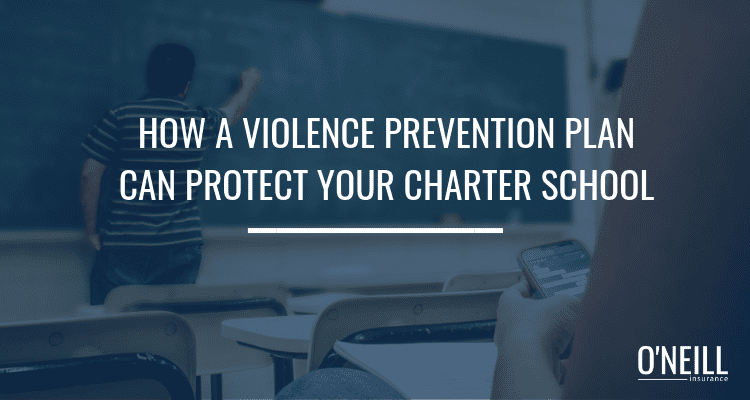As an administrator, dealing with school violence may be a nightmare, but unfortunately it’s a reality.
Data from the 2014 National Crime Victimization Survey found that out of 1,000 students, 55 are victimized at school.
Although extreme incidents of school violence garner the most media attention, many educational settings are stricken with more commonplace- yet no less significant – activities that constitute incidents of school violence.
These include threats of physical violence, harassment, intimidation or threatening, disruptive behavior. These acts of violence not only affect those involved; they also disrupt the educational process, leading the absenteeism and poor academic performance in students and disenchantment and high turnover in teachers.
Recognizing the risk of school violence and taking action is essential.
The creation of a comprehensive school violence prevention plan is often the most important, yet least costly, portion of school’s safety program.
School Violence Prevention Strategies
There are several actions you can take to protect students and employees from school violence. School policies that clearly express zero tolerance for violent acts are an essential foundation, and communicating these policies to students and teachers alike is equally important. Improving security measures at the schools you serve can further ensure safety.
Evaluate the design of your school and identify security measures that can be instituted for the safety of your students and staff. Consider making the following adjustments to your school to prevent school violence:
-
Control access to the building and grounds during school hours. Not only will students be discouraged from tardiness and absenteeism, but the facility will be protected from unwanted intruders.
-
Use metal detectors. Students will be discouraged from bringing weapons to school.
-
Use security cameras to monitor the premises. Not only can recordings of violent incidents be used for disciplinary purposes, but the mere presence of the cameras deters violence.
-
Provide telephones in all classrooms. In the event of an emergency, a functional telephone will allow for immediate, crucial communication with administration and law enforcement.
-
Install an electronic notification system for use in the case of a school-wide emergency.
-
Require school uniforms. Uniforms allow anyone on campus to recognize outsiders, eliminate signs of gang membership and prevent students from carrying weapons in baggy clothing.
-
Require visitors to sign in and out of the facility.
-
Require students to wear badges or picture IDs. This practice facilitates identification of both students and intruders in the facility.
-
Institute a zero-tolerance policy for school violence, and communicate the policy to educators and students.
-
Include a student code of conduct that outlines expectations and disciplinary measures.
-
Create and communicate a procedure for educators and students to follow when faced with violence in the event of an emergency.
-
Create a structured, anonymous threat-reporting system that allows students and teachers to warn authorities without fear of retaliation. Remind students often of the presence of this system.
-
Train educators in mediation techniques and in recognizing the warning signs of violent behavior.
Identifying Potentially Violent Students
A number of factors can trigger school violence between students, and no one set of characteristics necessarily typifies a perpetrator. However, there are often red flags that can be detected before a student commits an act of violence.
Be alert, and train staff to be alert, for these indicators of potential school violence, stressing the importance of reporting any suspicious behavior:
-
Intimidating, harassing, bullying, belligerent or other inappropriate and aggressive behavior
-
Frequent conflicts with other students or teachers
-
Making idle threats or references to weapons
-
Statements indicating approval of violence or identification with perpetrators of violence
-
Desparate or suicidal statements
-
Substance abuse
-
Extreme deviation from normal behavior
Train teachers not to overreact but also not to ignore these red flags. Discussing a potential violent situation with experts on staff can help determine how it may be best handled.
Responding to School Violence
No amount of preventive action can guarantee immunity from violence at your facility. It is essential that when a violent incident does occur that the response be timely and appropriate. After the incident, recognize that students and teachers could be traumatized, and provide appropriate counseling.
Beyond School Violence Training
Proper training should increase awareness of school violence risks, emphasize the importance of adhering to protective administrative controls and encourage staff to immediately report any suspicious or threatening behavior.
Training, however, is only one component of a successful school violence prevention program. A comprehensive approach, including changes to security measures and administrative controls, is vital to your program’s success.
Next Step
Let’s put your school prevention plan to the test. Let me know what specific questions you have about school prevention, and how this particular risk exposure is covered through your insurance program. Email me at tvanauker@oneillinsurance.com or call me at (330) 334-1561.
This information is abstracted from Zywave’s “Risk Insights: Preventing Violence in the Classroom” article.


